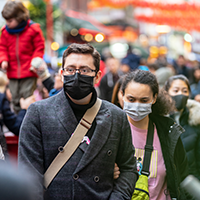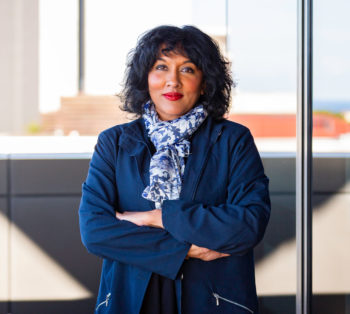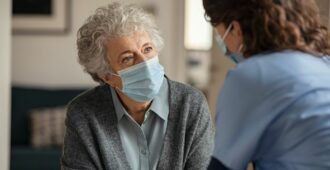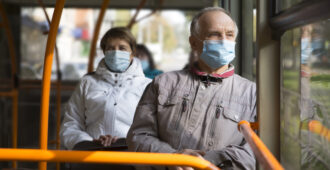
Australia could see higher proportional death rates from the novel coronavirus outbreak than in China, due to our relatively older population and the more severe symptoms of the virus in older people, according to a perspective penned by one of the world’s leading biosecurity experts.

The warning follows the outbreak of coronavirus (COVID-19) infection in a Sydney aged care facility and the death of one resident who tested positive for the virus.
Writing in the latest issue of the journal Public Health Research & Practice, published by the Sax Institute, Professor Raina MacIntyre, who heads the Biosecurity Program at the Kirby Institute, UNSW Sydney, says the possibility of a proportionally greater morbidity and mortality impact in Australia means that we should persist with all feasible prevention measures for as long as possible.
Travel restrictions and quarantines are proven interventions for disease control, Professor MacIntyre says, but travel bans are not sustainable indefinitely because of our close economic ties with China.
“Countries everywhere will have to make choices between the economic and public health consequences of COVID-19,” she writes.
Professor MacIntyre’s wide-ranging perspective looks at the likely impacts of novel coronavirus disease in Australia and elsewhere, and is informed by a rigorous training simulation for a pandemic in Sydney she undertook with colleagues in 2018.
She points to cruise ships as a “weak link” that could lead to sustained community transmission of the deadly infection in Australia and elsewhere. A cruise ship berthed in Sydney Harbour with 500 cases of novel coronavirus (COVID-19) infection would “immediately stress our health system” and any prolonged epidemic could rapidly exhaust our capacity for ICU and isolation beds, as well as stocks of personal protective equipment and other supplies.
“Advice to Australians to avoid cruises in the Asia-Western Pacific region at this time may be prudent,” she writes.
Once travel bans are lifted, we need to be prepared for a potential surge of cases worldwide, Professor MacIntyre says, with schools, universities, sports and entertainment venues being sites of more intense transmission. We may need to plan for alternative sites for contact quarantine and the use of community volunteers.
Other key points:
- New Australian cases of infection in people with no travel history or known contact with a carrier suggests we may have entered a period of sustained community transmission of COVID-19
- Cases are occurring where people have the virus but are not showing symptoms – and they may be just as likely to spread the infection as people with disease symptoms
- A high ratio of deaths to cases in Iran and Italy suggests a substantial proportion of undiagnosed cases and community transmission, and in Japan researchers estimate that more than 90% of cases are undetected.
Another highlight of this latest issue of Public Health Research & Practice is a research article on the junk food advertising children are exposed to on their trip to school. Researchers from Cancer Council NSW and the University of Wollongong found that kids may see up to 2800 of these ads every year on their school route, many of them adorning buses, bus shelters and train stations. The authors call for all state governments to ban junk food advertising from state-owned property.
Another article focuses on end-of-life care in rural and remote Australia. Often GPs deliver palliative care in these regions, despite feeling ill-equipped for the role. The study authors outline a compelling, patient-centred solution that could guide local care for those in need across all settings and providers.
Other articles find:
- A NSW obesity prevention program has reached 80% of state primary schools, showing the way forward in promoting healthy lifestyles to children
- Over 45,000 Australians prescribed statins stopped taking the medication when copayments were significantly increased, demonstrating the effect of cost on compliance
- Many pregnant women have unresolved fears around vaccination, and GPs and other health professionals may need to do more to allay their fears.
Click here to view the full contents of the latest issue of Public Health Research and Practice. Note that links will be live from 0001HRS Tuesday 10 March 2020. Please contact us (details below) if you would like to access the papers before this date.
Media enquiries
Hugo Wilcken, Media Manager, Sax Institute
M: 0451 122 146 E: hugo.wilcken@saxinstitute.org.au
Nyssa Skilton, PHRP Editor
M: 0408 331 262 E: nyssa.skilton@saxinstitute.org.au
Public Health Research & Practice is an open-access, peer-reviewed, Medline-listed quarterly online journal published by the Sax Institute. Click here to subscribe for free.
Please acknowledge Public Health Research & Practice as the source for any stories on our papers.




